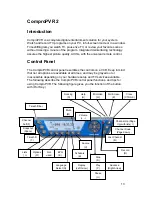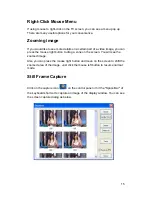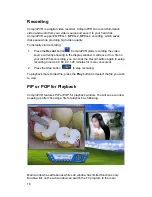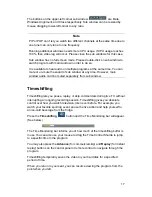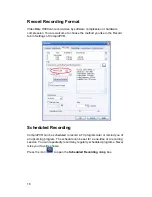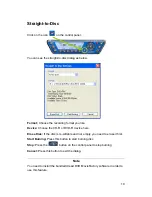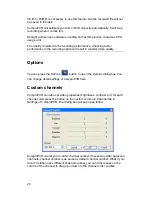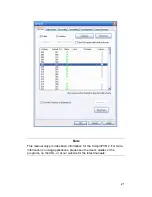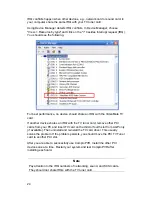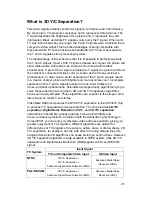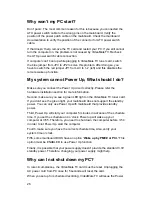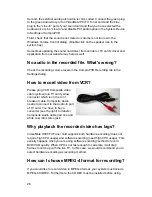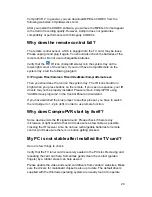
25
What is 3D Y/C Separation?
Television signals actually contain two signals, Luminance and Chrominance.
By convention, Y represents Luminance and C represents Chrominance. The
Y signal describes the brightness of the picture and C represents the color
information. Black and white TV signals contain only the Y signal. When color
TV was introduced many years ago, the Y and C signals were combined into a
composite
video signal. This has the advantages of being compatible with
black and white TV set and using less bandwidth. All TV sets must separate
the Y and C signals before presenting a picture.
The disadvantage of this scheme is that it is impossible to perfectly separate
the Y and C signals. If part of the Y signal is treated as C signal, the picture will
show rainbow-like color pattern as known as the Cross-Color Artifact
phenomenon. If part of the C signal is treated as Y signal, the picture will show
the vertical or horizontal dot lines color as known as the Cross-Luminance
phenomenon. In other words, better separation of the Y and C signals results
in a clearer, sharper picture with brighter and more accurate color. Incomplete
separation of the Y and C signals results in Cross-Color Artifact and
Cross-Luminance phenomena. Scientists developed many algorithms trying to
solve these problems. Among them, 2D and 3D Y/C separation algorithms
have been widely adopted. These algorithms are superior to the simple comb
filters found on most TV sets today.
VideoMate H900 incorporates the NTSC Y/C separation
in the CX23418 chip
to process Y/C separation and noise reduction. The chip provides
2D Y/C
separation
,
Digital Noise Reduction
(DNR), and
3D Y/C separation
calculations in hardware, greatly reducing Cross-Color Artifacts and
Cross-Luminance problems. Combined with the deinterlacing technology in
ComproPVR, you can enjoy crystal clear video and less eyestrain, giving you
greater enjoyment of TV programs. Different algorithms are optimal for
different types of TV programs, for example, action, news, or drama shows. 2D
Y/C separation, for example, has the side effect of turning oblique lines into
hanging dots while 3D algorithms can cause blurring in action videos. However,
3D Y/C separation algorithm is
only
available in NTSC system while 2D Y/C
separation and Digital Noise Reduction
(DNR) applies to PAL and SECAM
signal.
Input Signal
TV System
TV and Composite Video Input
S-Video Input
NTSC
3D Y/C Sepa
2D Y/C Sepa
Advanced Digital Noise Reduction (DNR)
Advanced Digital Noise
Reduction (DNR)
PAL/SECAM
2D Y/C Sepa
Advanced Digital Noise Reduction (DNR)
Advanced Digital Noise
Reduction (DNR)



